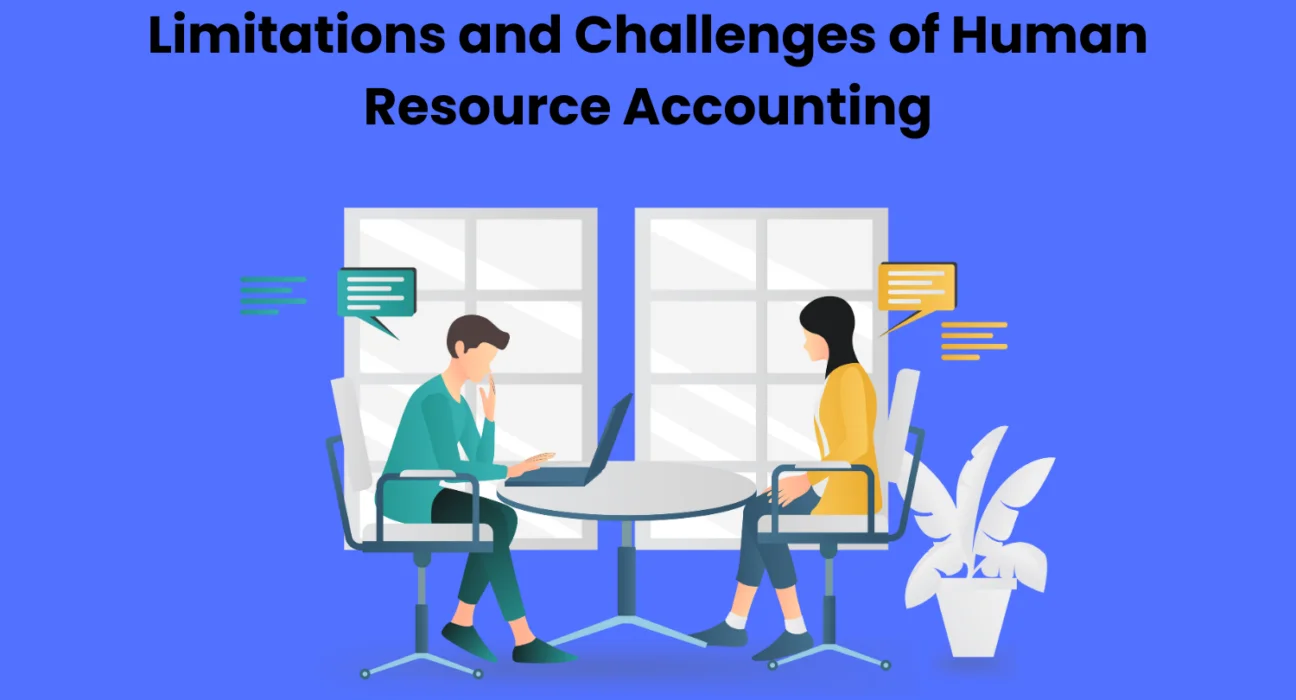Human resource accounting (HRA) is a vital aspect of modern business management, aiming to quantify the value of human resources in an organization. While it offers valuable insights into the workforce’s contribution, it comes with its set of limitations and challenges. Understanding the Advantages and Disadvantages of Human Resource Accounting is crucial for organizations seeking to leverage their human resources effectively. In this blog, we explore the limitations and challenges of Human Resources Qualifications, exploring its difficulties, and shedding light on its advantages and disadvantages.
Table of Contents
Understanding Human Resource Accounting
Human resource accounting is a technique for calculating the cost and value of personnel to a company. It entails analysing the return on investment made in human capital and determining how it affects the company’s operation. This strategy acknowledges that workers are an asset that helps the business succeed and an expense. Organisations may make well-informed choices about talent management, training, and recruiting by valuing their people resources.
Limitations of Human Resource Accounting
Although human resource accounting offers many potential advantages, a few drawbacks may reduce its efficacy. The difficulty of precisely calculating the value of human capital is one of the main obstacles. Unlike physical assets like machinery or equipment, human capital is intangible and difficult to measure. Assigning a monetary value to factors like abilities, expertise, and experience may be difficult since they are subjective and might differ greatly between workers.
The use of historical data is another drawback. The worth of human capital is often determined by human resource accounting using historical expenses and performance data. The dynamic character of human resources may not be well captured by this method, particularly given today’s quickly changing corporate climate. Because abilities and competencies change over time, using historical data alone could not provide a reliable indication of an employee’s worth.
In addition, accounting for outside variables that affect human capital presents difficulties for human resource managers. The value of human resources may be impacted by market movements, industry trends, and economic situations. Still, measuring and accounting for these outside influences in accounting models can be challenging.
Challenges of Human Resource Accounting
Besides its constraints, human resource accounting presents several other difficulties businesses must overcome. Organisational resistance to change is one of the main problems. A mentality change is necessary to implement human resource accounting so that workers are seen as strategic assets instead of merely a cost. Older accounting methods that place greater emphasis on material assets may oppose this change in viewpoint.
The absence of standardised standards for assessing human capital is another problem. Unlike financial accounting, which has well-established standards and indicators, human resource accounting does not have a widely recognised framework. Because of this lack of standardisation, HRA is less relevant for benchmarking and industry analysis when comparing human capital across various organisations and sectors.
Advantages and Disadvantages of Human Resource Accounting
A comprehensive understanding of an organisation’s human capital, improved workforce management decision-making, and emphasis on the value of investing in personnel for long-term success are just a few benefits of human resource accounting. Nevertheless, there are drawbacks, such as the subjective nature of valuing human capital, the dependence on historical data, and the difficulties in considering outside influences.
Overcoming the Limitations of Human Resource Accounting
Even though human resource accounting has significant limits, there are ways for businesses to get over these obstacles. Developing more advanced techniques for assessing human capital is one strategy. This can include using sophisticated analytics and metrics to evaluate workers’ performance, abilities, and talents more precisely. By using technology and data analytics, Organisations may better know their human capital and how it affects business results.
A different approach to assessing human capital is concentrating on the future rather than the past. Organisations may utilise predictive analytics to anticipate future trends in human resource management instead of depending on previous data. Organisations may proactively invest in their staff to remain ahead in a fast-changing business environment by projecting future skill and talent requirements.
Conclusion
Human resource accounting has drawbacks and difficulties even though it may provide insightful information on an organisation’s people capital. It is important for organisations seeking to efficiently use their human resources to comprehend these constraints. Organisations may more effectively use the potential of human resource accounting to promote success and sustainable development by recognising these issues and making efforts to resolve them.






